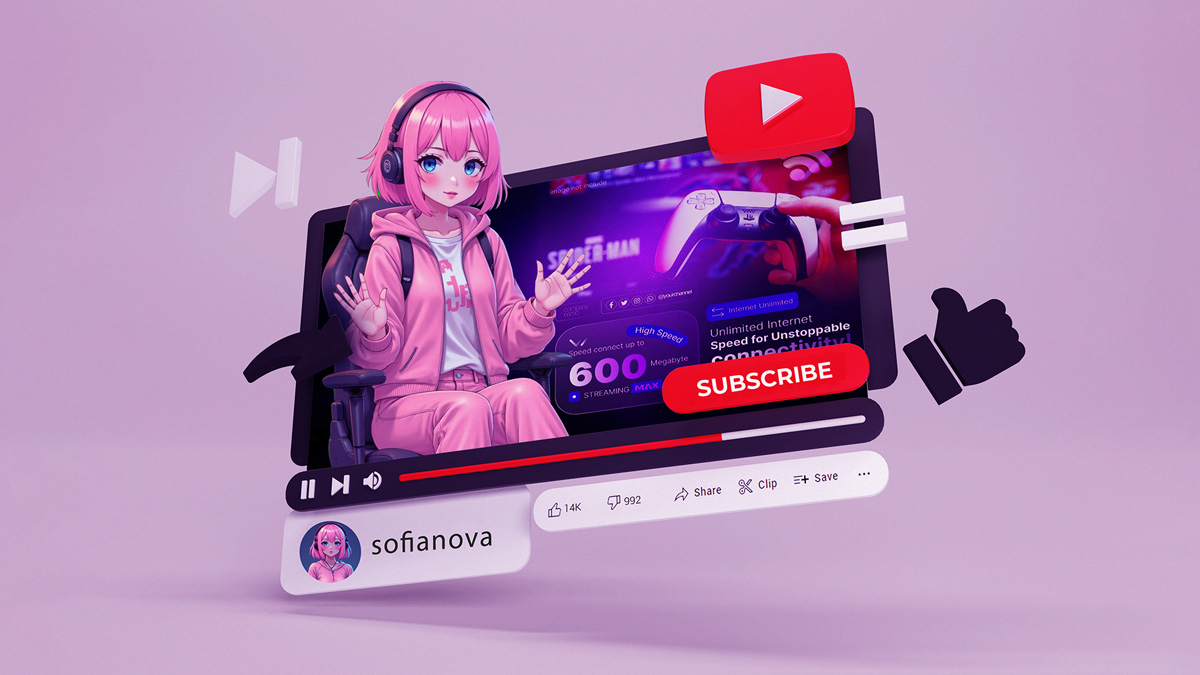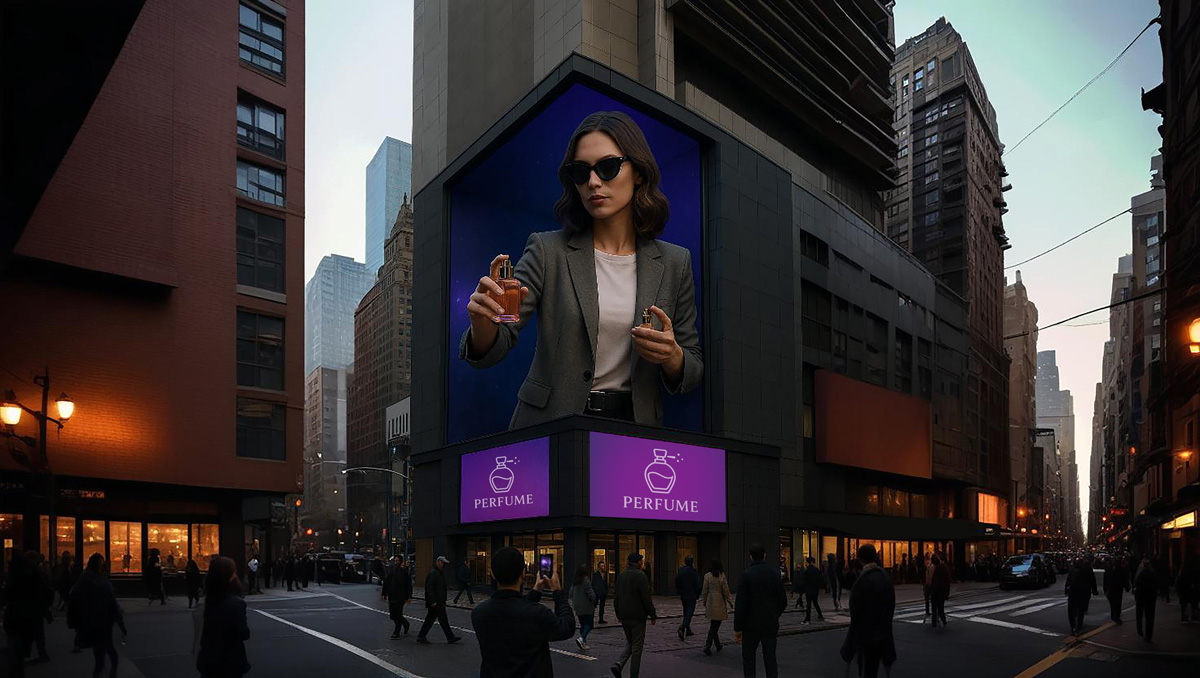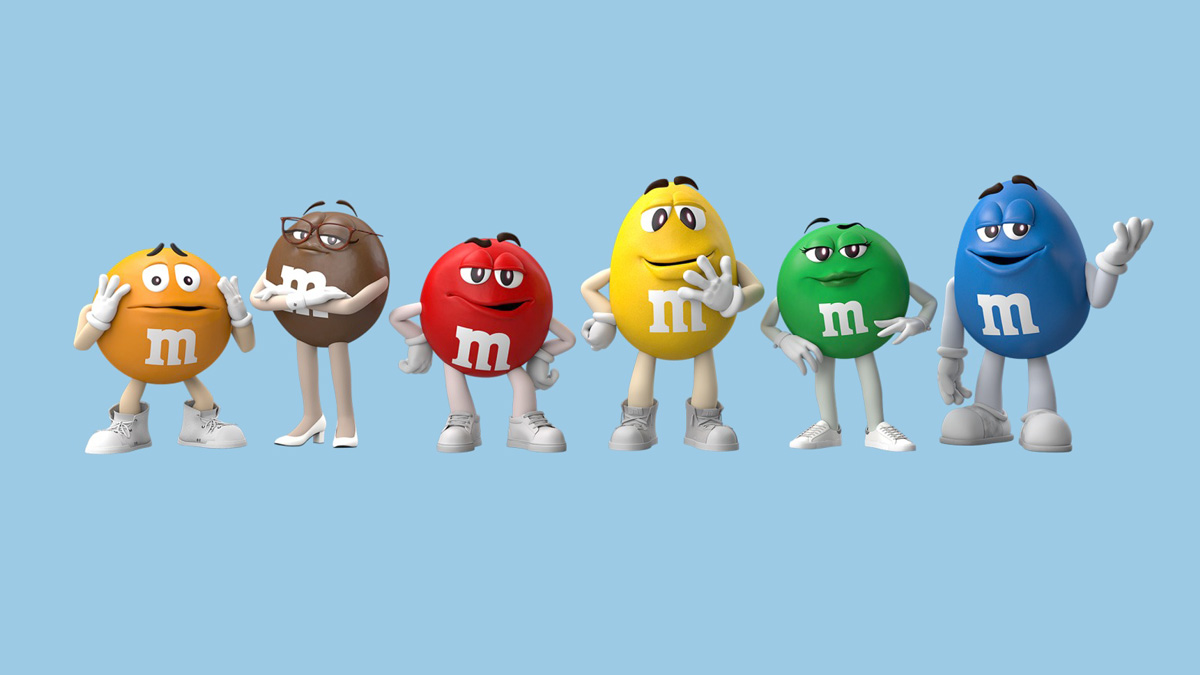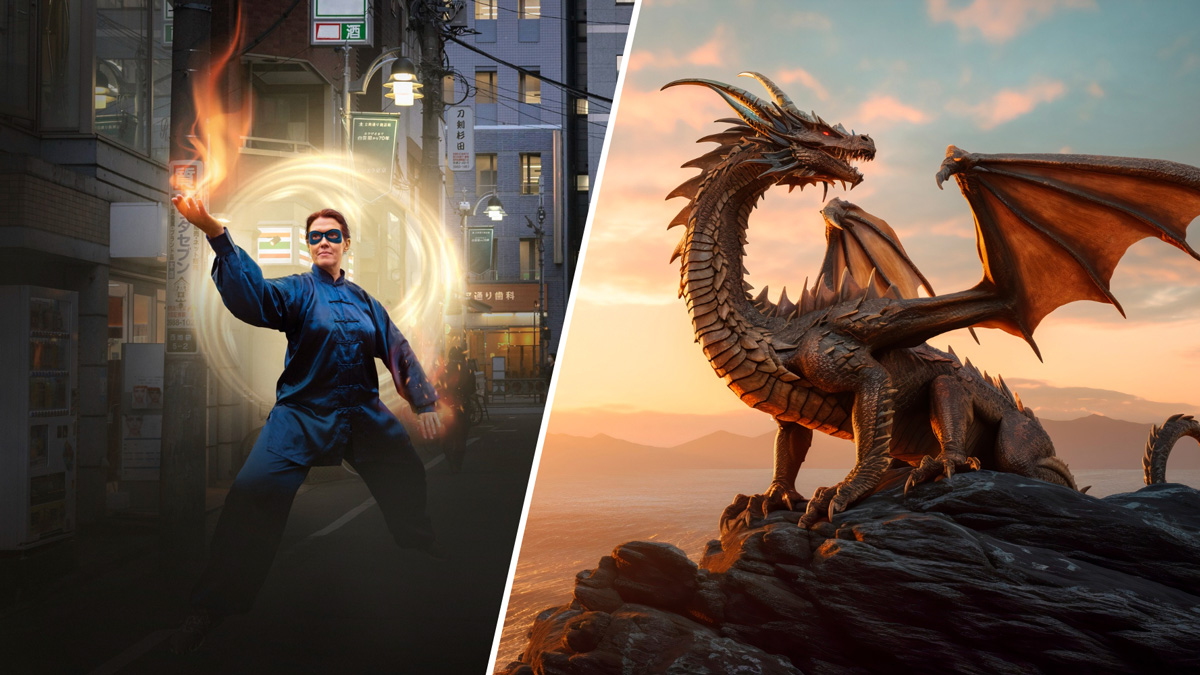
- What Are VFX and CGI? A Quick Overview
- VFX vs CGI Cinematic Examples
- How CGI and VFX are used in Advertisements
- 3D CGI Billboard
- VFX vs. CGI: Key Differences
- Technical Differences Between VFX and CGI
- VFX vs. CGI in Film Production: A Quick Comparison
- Challenges and Limitations in Production
- How to Choose Between VFX and CGI for a Project
- Impact on Storytelling and Visual Aesthetics
VFX (Visual Effects) and CGI (Computer-Generated Imagery) are now essential in modern advertising, social media, and brand storytelling, helping creators bring their ideas to life. However, even though they are used a lot, many people still don’t fully understand the difference between VFX and CGI. Are they the same thing? How are they used differently? And most importantly, how can brands use them to create amazing and memorable content?
Whether you’re a digital marketer looking to elevate your next campaign or a creative professional seeking clarity, this guide will help you understand how to choose the right tool for your project.
What Are VFX and CGI? A Quick Overview
At their core, the distinction in VFX vs CGI lies in how they operate: both are tools used to create video visuals, but they serve different purposes.
- VFX (Visual Effects): Integrating live-action footage with computer-generated elements to create realistic or animated scenes. Think of it as enhancing or manipulating real-world footage to achieve the desired effect. For example, adding explosions, weather effects, or even entire environments to a video.

- CGI (Computer-Generated Imagery): This creates an entire scene, from characters to environments, using 3D modeling and animation software. CGI doesn’t rely on live-action footage; it’s built from scratch in a digital space.
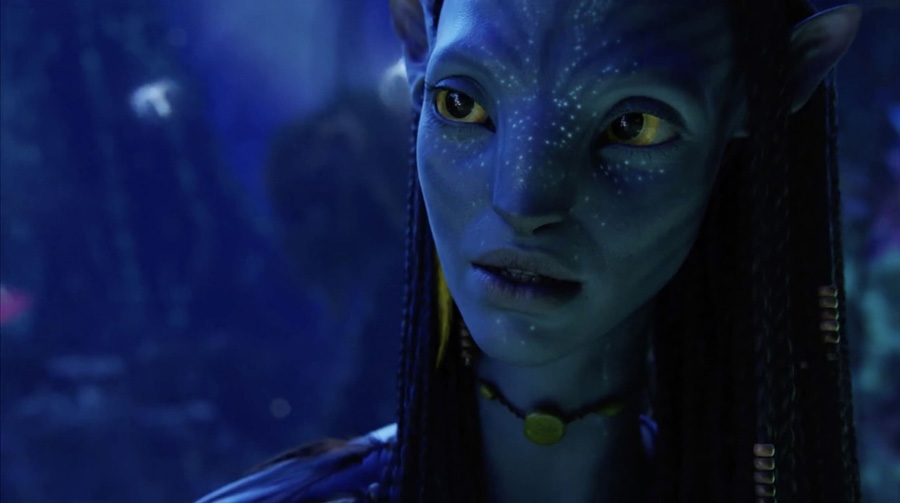
It can be said that in general, VFX is a sub-branch of all the various CGI techniques. Often, the use of VFX is also called CGI, and of course, that is not wrong.
VFX vs CGI Cinematic Examples
From the seamless integration of VFX in cinema, the debate of VFX vs CGI showcases how these technologies shape cinematic storytelling, blending reality with imagination to captivate audiences worldwide.
VFX Examples
From adding lifelike CGI dinosaurs to live-action scenes in Jurassic Park to creating jaw-dropping explosions and destruction in Transformers, they are example of using VFX in Cinema.
It’s also used to enhance environments and landscapes, as seen in the sweeping fantasy epic The Lord of the Rings, where VFX brought Middle Earth to life in breathtaking detail.
CGI Examples
Iconic characters like Gollum in The Lord of the Rings trilogy were brought to life through CGI. Entire cities and landscapes were built in animated films like Frozen and Toy Story, while futuristic spacecraft and alien planets were designed in stunning detail for science fiction epics like Avatar.
How CGI and VFX are used in Advertisements
In the advertising, the debate of VFX vs CGI highlights how both tools have become necessary. They allow brands to tell stories that would be impossible to capture in real life, creating memorable and engaging content.
Look at one of our CGI videos which is created for our client.
VFX in Advertising
VFX in Advertising shines when you need to blend reality with imagination. For instance:
- Product Enhancements: Adding subtle effects to make a product look more appealing like steam rising from a cup of coffee or a car’s headlights glowing brighter.
- Environmental Manipulation: Transforming a mundane location into a futuristic cityscape or a lush jungle.
- Dynamic Effects: Incorporating explosions, fire, or water effects into live-action footage for high-energy ads.
CGI in Advertising
CGI, on the other hand, is perfect for creating entirely new worlds or characters. For example:
- Animated Characters: Think of mascots or brand ambassadors that don’t exist in real life, like the M&M’s characters.
- Impossible Scenarios: Showcasing a car driving on Mars or a perfume bottle floating in space.
- Hyper-Realistic Product Visuals: Creating 3D models of products that don’t yet exist, like prototypes of new tech gadgets.
3D CGI Billboard
A 3D CGI billboard is a digital billboard that displays computer-generated (CGI) video content designed to create the illusion of 3D depth — as if the object is popping out of the screen or floating in space.
VFX vs. CGI: Key Differences
Here are the key differences of VFX vs CGI, two powerful tools that shape the visual landscape of modern media, each with its unique strengths and applications in creating captivating and immersive experiences:
| Criteria | VFX | CGI |
| Adaptability | VFX is adaptable to various production environments, allowing for integration with live-action footage. | CGI is less flexible once creation has begun, as changes can be costly and time-consuming. |
| Creation Techniques | Combines live-action footage with digital enhancements and practical effects. | Involves creating photorealistic or stylized images from scratch using computer software. |
| Scheduling and Planning | Requires careful planning to integrate digital elements with live-action footage. | Planning is centered around the digital creation process, which can be lengthy but more predictable. |
| Realism vs Creativity | Aims for realism, enhancing or altering reality without breaking immersion. | Offers more creative freedom, creating entire scenes or characters that may not exist in reality. |
Adaptability
In filmmaking, Visual Effects (VFX) stand as a versatile and transformative tool, seamlessly integrated into narratives to elevate storytelling. VFX allows filmmakers to add digital elements to live-action footage, creating scenes that would otherwise be too costly, dangerous, or simply impossible to capture in real life. This flexibility empowers directors to push the boundaries of creativity, transforming ordinary locations into extraordinary settings by blending reality with imagination. Whether it’s adding fantastical creatures, enhancing environments, or simulating natural phenomena, VFX opens up a world of possibilities, enabling filmmakers to bring their most ambitious visions to life.
On the other hand, Computer-Generated Imagery (CGI), as a form of 3D modeling, offers a different kind of creative freedom. During its creation, CGI is highly fluid, allowing artists to meticulously craft every detail of a scene or character. However, once the CGI sequence is finalized and rendered, making further alterations can be challenging and time-consuming. Despite this limitation, CGI provides filmmakers with unparalleled opportunities to construct entire worlds from scratch, offering near-complete autonomy during the pre-production phase. From designing fantastic landscapes to creating lifelike characters, CGI empowers filmmakers to visualize and realize stories that transcend the constraints of the physical world.
Creation Techniques
The creation of VFX involves a multifaceted process that combines practical stunts, on-location shooting, and advanced compositing techniques. This intricate blend requires seamless collaboration across various departments, from on-set crews to post-production teams. For the final result to appear cohesive, VFX artists meticulously align and manipulate digital layers to complement the live-action footage, ensuring that every cut and edit flows naturally. The goal is to create a harmonious fusion of reality and digital artistry, where the effects enhance the story without drawing attention to themselves.
In contrast, CGI is rooted in digital art, relying on a series of specialized techniques such as 3D modeling, texturing, rigging, and animation to bring graphics to life. This process demands a unique balance of creativity and technical precision, as CGI artists build every element from scratch. While this approach grants artists complete control over the visual aesthetics of their work, it also comes with significant demands in terms of time, resources, and computational power. The result, however, is the ability to craft entirely new worlds and characters that captivate audiences and expand the boundaries of visual storytelling.
Scheduling and Planning
Timing is a critical factor in VFX, as it involves crafting digital effects that must seamlessly integrate with live-action footage captured during production. This process can be particularly challenging, as it requires meticulous synchronization and careful planning to ensure that the digital elements align perfectly with the filmed components. VFX shots can be created at any stage of production, but they must be strategically timed and planned to blend effortlessly with the live footage. The goal is to create a cohesive visual experience where the effects enhance the narrative without appearing disjointed or out of place.
On the other hand, CGI focuses on building animated models of real-world objects or entirely new creations for use in films. While CGI production is generally less dependent on external factors like weather or actor availability, common challenges in live-action filming are that it can be incredibly time-consuming due to the complexity of the work involved. High-quality CGI demands attention to intricate details and often involves rigorous technical processes, making it a resource-intensive endeavor. Despite these challenges, CGI offers unparalleled flexibility, allowing filmmakers to visualize and refine their ideas with precision, even if it requires significant time and effort to achieve the desired level of realism and detail.
Realism vs Creativity
The primary goal of VFX is to achieve a level of realism that makes it nearly impossible for viewers to distinguish between live-action footage and digitally enhanced elements. VFX artists strive to seamlessly blend computer-generated imagery with real-world scenes, ensuring that the audience remains fully immersed in the story.
Whether it’s adding fantastical creatures, enhancing environments, or creating dramatic effects, the artistry lies in making these elements feel organic and believable within the film’s universe. The ultimate success of VFX is measured by how effortlessly it integrates into the narrative, leaving viewers unaware of the digital magic at work.
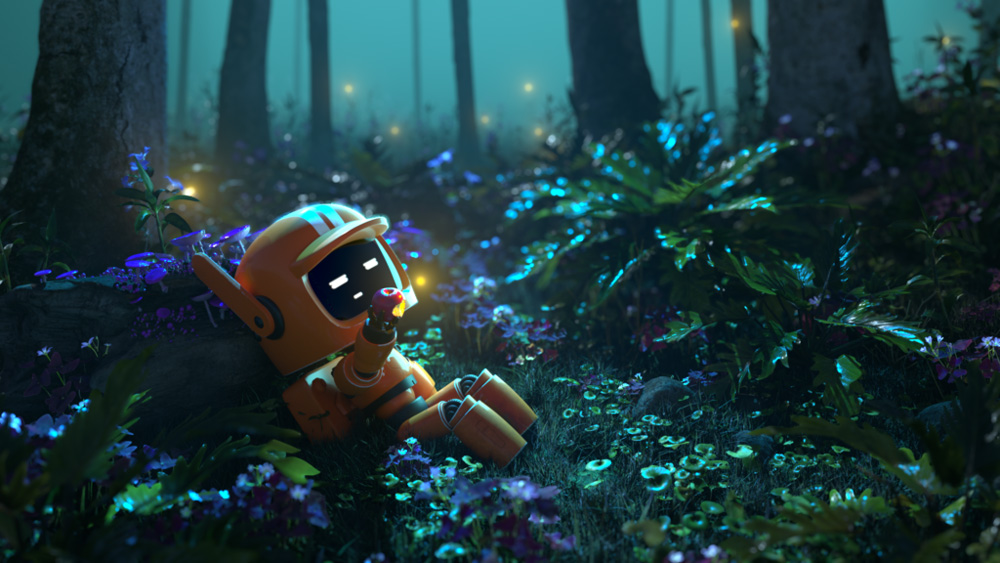
In contrast, CGI offers boundless creative freedom, as it involves building scenes, characters, and worlds entirely from scratch. Unlike compositing, which relies on blending digital elements with live footage, CGI is not constrained by the limitations of the physical world. This allows artists to dream big and bring even the most imaginative concepts to life—from mythical creatures to futuristic cities. CGI empowers filmmakers to visualize the impossible, creating visuals that defy reality and captivate audiences with their originality and detail.
Technical Differences Between VFX and CGI
To fully understand the difference between VFX and CGI, it’s essential to break down their technical processes, software, and hardware requirements.
1. Technical Processes
- VFX: Requires seamless integration of digital elements with live-action footage. This involves matching lighting, shadows, perspective, and textures to ensure realism.
- CGI: Entirely created in a digital environment, involving 3D modeling, texturing, lighting, and rendering. It doesn’t rely on real-world footage.
2. Software Used
- VFX: Tools like Adobe After Effects, Nuke, and Houdini are commonly used for compositing and enhancing live-action footage.
- CGI: Software like Maya, Blender, 3ds Max, and Cinema 4D are used for 3D modeling, animation, and rendering.
3. Hardware Requirements
- VFX: Requires powerful systems with high-end GPUs and CPUs to handle compositing and rendering tasks efficiently.
- CGI: Demands even more robust systems, especially for complex projects involving detailed 3D models and high-resolution rendering.
4. Production Pipeline
- VFX: Involves collaboration between live-action filming teams and VFX artists. The process includes pre-production (concept design, storyboarding), filming, and post-production (compositing, rendering).
- CGI: Entirely digital, from concept design and 3D modeling to animation and final rendering.
VFX vs. CGI in Film Production: A Quick Comparison
While this article focuses on advertising, it’s worth noting the VFX and CGI comparison in film production. VFX often enhances real footage, while CGI creates entirely digital scenes. For example:
- VFX: Adding a dragon to a live-action scene in Game of Thrones.
- CGI: Creating the entire world of Pandora in Avatar.
In advertising, the lines can blur, but the principles remain the same.
Challenges and Limitations in Production
In the debate of VFX vs CGI, both VFX and CGI offer incredible possibilities; they come with their own set of challenges.
VFX Challenges
- Integration:
- Seamlessly blending VFX with live-action footage requires meticulous attention to detail. Lighting, shadows, and perspective must match perfectly to avoid breaking the illusion.
- Example: If a luxury watch is added to a live-action scene, the reflections on its surface must align with the environment’s lighting conditions.
- Challenge: Even minor discrepancies can make the final result look unnatural or “off.”
- Cost:
- High-quality VFX can be expensive, especially for complex scenes that require detailed simulations (e.g., water, fire, or particle effects).
- Challenge: Budget constraints can limit the scope of VFX work, forcing compromises in quality or creativity.
- Time-Consuming:
- Rendering and compositing can take significant time, especially for high-resolution projects. Complex scenes may require hours or even days to render a single frame.
- Challenge: Tight deadlines can put pressure on teams, potentially affecting the quality of the final output.
- Dependency on Source Footage:
- VFX relies heavily on the quality of the live-action footage. Poor lighting, shaky camera work, or low-resolution footage can make VFX integration more difficult.
- Challenge: Fixing issues in post-production can be time-consuming and costly.
CGI Challenges
- Realism:
- Achieving photorealistic CGI requires advanced skills, powerful software, and high-end hardware. Every detail, from textures to lighting, must be meticulously crafted.
- Challenge: Even with the best tools, creating CGI that is indistinguishable from reality is incredibly difficult and often requires iterative refinement.
- Resource-Intensive:
- Creating detailed 3D models and animations demands significant computational power. Rendering photorealistic scenes can strain even the most advanced systems.
- Challenge: Smaller studios or independent creators may struggle to afford the necessary hardware and software.
- Creative Limitations:
- While CGI can create anything imaginable, it can sometimes feel “too perfect,” lacking the organic imperfections of real life. This can make the final result feel sterile or artificial.
- Challenge: Striking a balance between perfection and realism is an art in itself.
- Learning Curve:
- Mastering CGI software like Blender, Maya, or Cinema 4D requires significant time and effort. Artists must also stay updated with the latest tools and techniques.
- Challenge: The steep learning curve can be a barrier for newcomers.
How to Choose Between VFX and CGI for a Project
When deciding on VFX vs CGI, the choice depends on your project’s goals and requirements. Here’s a quick guide:
- Use VFX if: You have live-action footage that needs enhancement or manipulation.
- Use CGI if: You need to create something entirely new, like a product prototype or an animated character.
Impact on Storytelling and Visual Aesthetics
In the discussion of VFX vs CGI, both CGI and VFX play critical roles in modern storytelling, allowing filmmakers to create immersive worlds and breathtaking visual effects. However, the choice between CGI and VFX can significantly impact the overall look and feel of a film, influencing everything from character design to cinematography.
At Dreamfarm Agency, we specialize in both VFX and CGI Video production, offering tailored solutions to bring brands’ vision to life.
Ready to bring your storytelling to life with stunning CGI and VFX? Let Dreamfarm Agency transform your vision into a cinematic masterpiece. Contact us today to elevate your project’s visual impact!

HosseinDigital Marketing Expert
